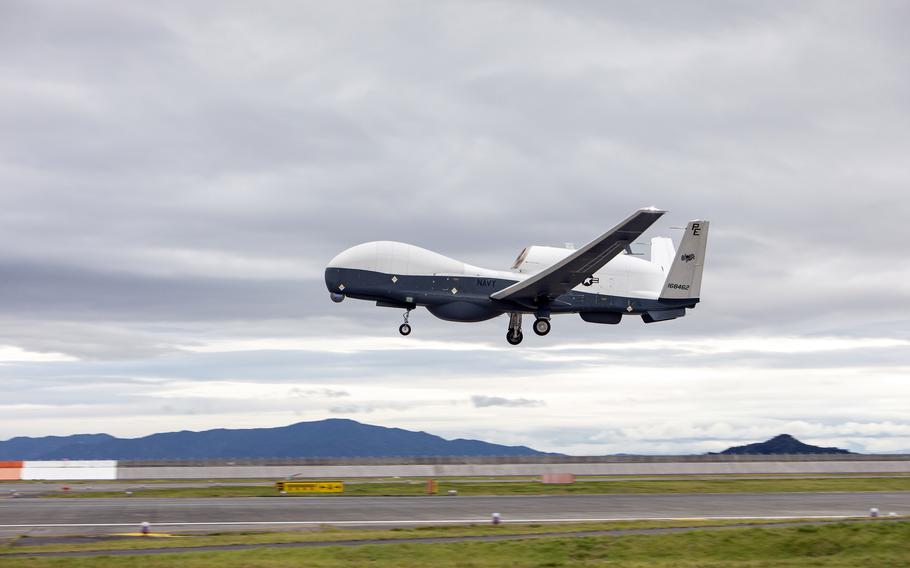
A U.S. Navy MQ-4C Triton assigned to Unmanned Patrol Squadron 19 takes off at Marine Corps Air Station Iwakuni, Japan, Oct. 5, 2022. (David Getz/U.S. Marine Corps)
MARINE CORPS AIR STATION IWAKUNI, Japan — The Navy’s MQ-4C Triton, fresh from in-flight capability trials over the Indo-Pacific, is teed up for further testing with advanced capabilities this year.
The drone, developed by Northrop Grumman for the Navy, arrived at MCAS Iwakuni, near Hiroshima, in July to test its intelligence, surveillance and reconnaissance capabilities before departing in October.
The Triton will return to the Indo-Pacific this year to start the next phase of its capability testing in the Integrated Functional Capability 4 configuration.
The sensor upgrade in that configuration dramatically improves the Triton’s signals intelligence, or listening, capabilities, according to Rob Zmarkzlak, chief engineer for Northrop Grumman, who is quoted on the company’s website.
The Triton is the first high-altitude, long-endurance aircraft that can conduct persistent intelligence, surveillance and reconnaissance missions over the ocean expanse to complement the P-8 Poseidon crewed aircraft, 7th Fleet spokeswomen Lt. Kristina Wiedemann told Stars and Stripes by email Wednesday.
“The MQ-4C Triton provided 7th Fleet with around-the-clock [intelligence, surveillance and reconnaissance] capability, as the aircraft has the capability to fly up to 24 hours during each mission,” she said.
Initial Triton testing in the Indo-Pacific began in 2020 at Andersen Air Force Base, Guam, with the aircraft in the baseline configuration known as Integrated Functional Capability 3, according to a March 16, 2023, Navy press release.
“Triton helps bolster our Intelligence, Surveillance, and Reconnaissance operations on a global stage,” Lt. Christopher Lee, a Triton naval flight officer, said in the release. “The communication and safety nets Triton brings to our friendly units is a game-changer.”
The Navy in 2021 deployed two Tritons at Misawa Air Base in the northeastern corner of the country.
During the Triton’s deployment with 7th Fleet, the Navy applied and refined its tactics, techniques and procedures, Wiedemann said.
“Triton’s increased persistence, capability and capacity through its multi-sensor payload will extend the maritime domain awareness of U.S. and partner Navies for the foreseeable future,” she said.